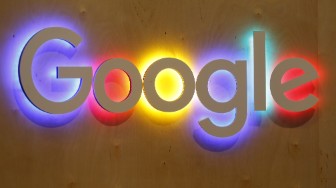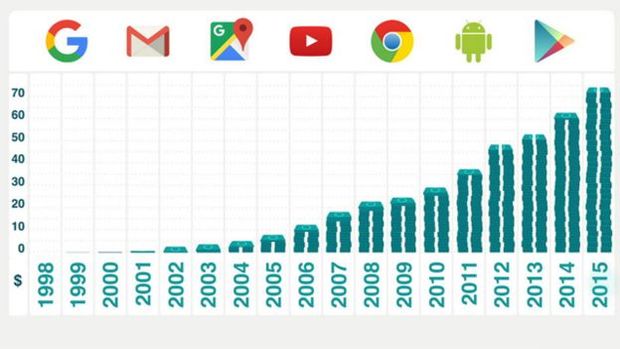
In February 2016, Google briefly surpassed Apple and became the world’s most valuable company, achieving a market value of more than $500 billion.
This figure is not surprising since the tech giant posted profits of $75 billion in 2015. That’s about $2,400 a second.
However its main service, the search service, is free.
With this arises the question: how did Google earn all this money?
According to the company’s 2015 Annual Report, of the $75 billion in profits recorded in 2015, $23 billion was from operating profits.
The tech giant earned $67.4 billion in 2015 in advertising profits. Of that $67.4 billion, $52.4 billion went to ads on Google’s websites, and $15 billion was thanks to ads served by Google on other websites.
Another $7.2 billion came from other sources.
Read also: ‘Sensationalist’ competes with reality and laughs for free in times of crisis
Most of the money came from the United States, $34.8 billion. From the rest of the world came $33.1 billion into Google’s coffers and $7.1 billion came from Britain only.
SEARCH FOR PROFITS
Since its launch in 1998, Google has grown a lot in terms of profits and also in the number of products it offers.

In 2004, Google launched Gmail, its email service.
The following year, in 2005, the tech giant turned digital mapping into something close to everyone with Google Maps.
In 2006, the empire expanded with the purchase of YouTube for $1.65 billion.
In 2008, the company launched its own browser, Chrome. In the same year, the company launched Android, operating system for mobile phones.
In 2012, Google launched the Google Play app store.
WAY WITH WORDS
Google gets most of its profits by selling advertising opportunities on the search pages that many of us use.
Advertisers make proposals to have their products or services shown on query results pages for relevant searches.
A combination of the size of the offer and the quality of a potential ad influences the position in which the ad will appear: the higher the page, the greater the chances a user sees.
To stimulate efficient bidding practices, Google uses the Vickrey auction system. The authors of the proposals do not know how are the offers of others.
When all offers arrive, he wins the best advertiser, but in reality he pays the price sent by the second best proposal.
But that’s not all.
Google also takes into account the relevance of the advertiser’s landing page to the search, favoring the greater specification of the product offered.
For example: if an advertiser has a page that is entirely about car insurance, they would have to make a smaller offer to appear at the top of paid advertising results when the user googlar “car insurance” than an advertiser who has a page about insurance in general. Google calls this a “quality level.”
EACH CLICK ACCOUNT
The attraction of the service to advertisers is that they can drive advertising to Google users who have already expressed their interest in what the advertiser sells and ignore users who have no interest in the product.
And this is known as contextual advertising.
Also, advertisers only have to pay Google after someone actually clicks on one of the advertisements and can set budgets to limit monthly spending.
Adwords, launched in 2000, remains Google’s primary source of profits.
But Google also makes money from advertising when you’re not on one of its sites.
The tech giant’s Adsense network puts advertisements on associated websites – from blogs to top content producers – and Google gets a share of the profits.